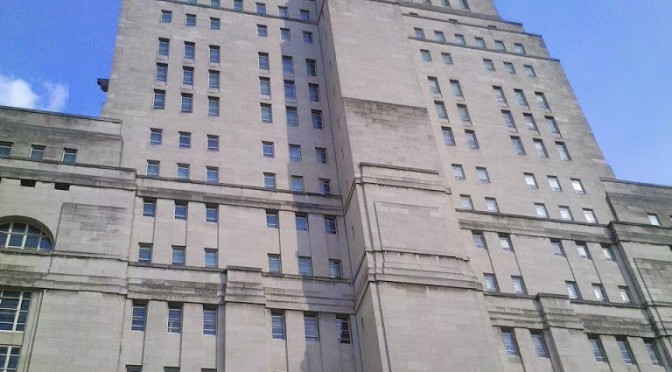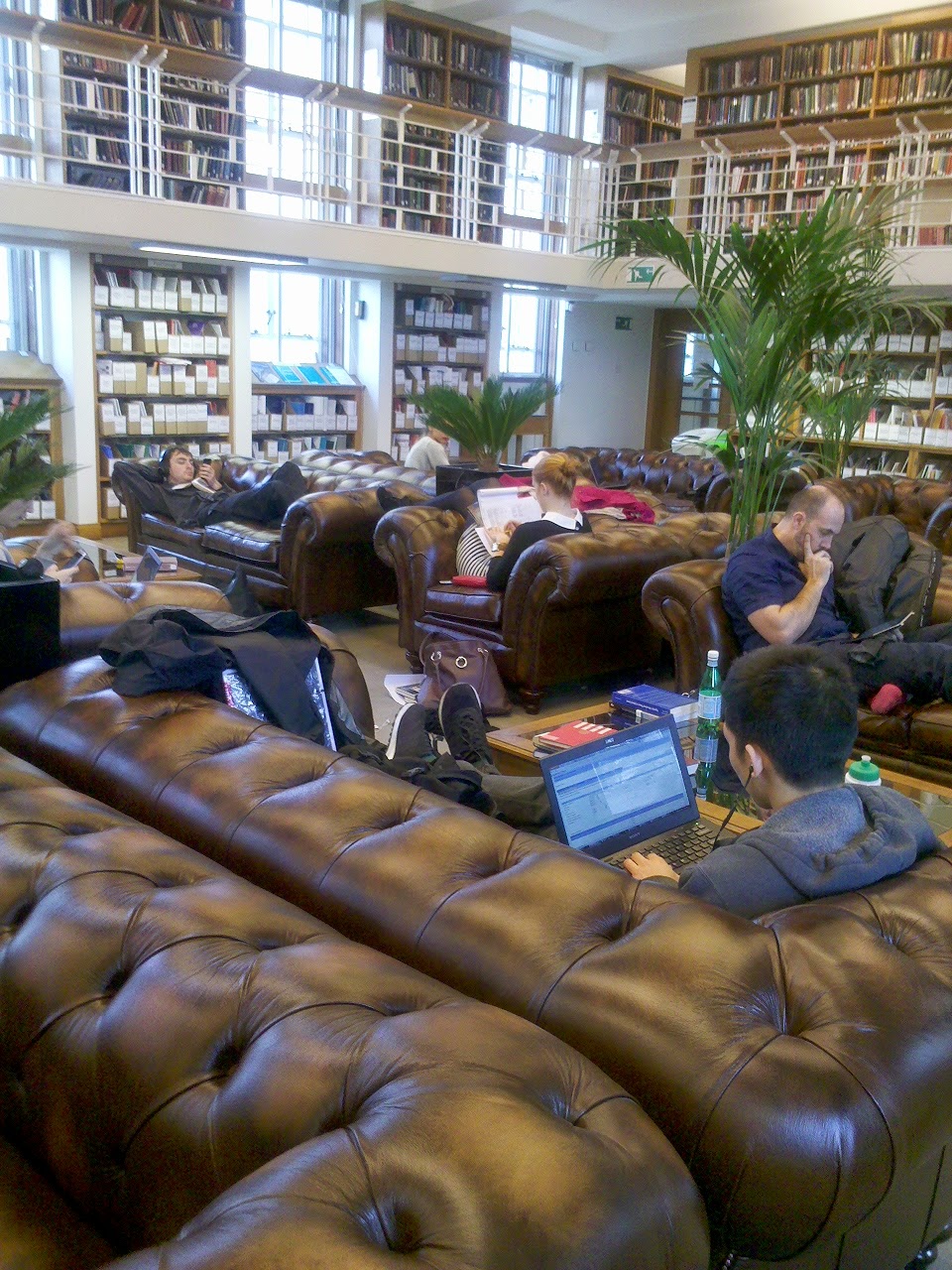Thanks to Andrew Praeter and Simon Barron I got a fantastic tour of the Senate House library (and building) just before I left London for home.
It’s a spectacular building–apparently, if WWII hadn’t broken out, it would have been part of a complex that extended all the way up through Gordon Square (right in front of the current Institute of Archaeology building). Crazy to think about. It was the first skyscraper in London.
It’s a landmark in Bloomsbury, and I’ve been walking past it for years, never quite realizing that’s what it was. Senate House is an interesting library in that it’s not attached to any one particular University, but rather has (someone correct me if I’m wrong) member institutions who pay for their students to have access. Senate House showed up in some of the cognitive maps that I collected from people at UCL, as a place where people enjoyed working. It’s a lovely building, I adore Art Deco architecture and design, and it’s a pleasure walking around it. The specific history of the building is fascinating, as there are elements that are simply unfinished (especially decorative flourishes that never happened), because of the War. The decorative flourishes that did manage to happen are stunning.
Stained glass windows.
The Senate Chamber. I want to give a talk in this room SO MUCH.
More stained glass.
Beautiful clock (with the reflection of Simon for good measure).
 |
| Lovely fabulous marble hall. |
The library-specific spaces in Senate House are uniformly Traditional Quiet Library spaces–there are no group study spaces in Senate House (although, apparently, students will walk up to the desk and ask “where are the group study rooms?”). The assumption is that there are such spaces provided by the home academic departments. I wonder how accurate that assumption is.
At any rate, as Traditional Library Spaces go, the ones in Senate House are nicely appointed, and are a good fit with contemporary scholarly behaviors (and technology).
 |
| This traditional reading room has tables big enough for people to spread out, and also use their laptops/tablets |
 |
| This reading room used to have desktop computers in it, but they moved those out and now just have large tables as shown. |
 Up in the stacks, there are workspaces as well. These little window seats have always been popular (windows are popular in Atkins, and really in nearly every library I’ve ever seen, at least in terms of where patrons like to park themselves). Senate House recently got new fittings for these window areas.
Up in the stacks, there are workspaces as well. These little window seats have always been popular (windows are popular in Atkins, and really in nearly every library I’ve ever seen, at least in terms of where patrons like to park themselves). Senate House recently got new fittings for these window areas. |
| A light, a shelf, a work surface, and outlets/powerpoints. And, a chair. |
 There are also these tables, with powerpoints and room to spread out. The funny pillars on the end of the table are artifacts from when there was a fixed desktop and monitor on one end of the table. Senate House has moved away from desktops in their library, except where they are used for catalog check stations.
There are also these tables, with powerpoints and room to spread out. The funny pillars on the end of the table are artifacts from when there was a fixed desktop and monitor on one end of the table. Senate House has moved away from desktops in their library, except where they are used for catalog check stations.

















